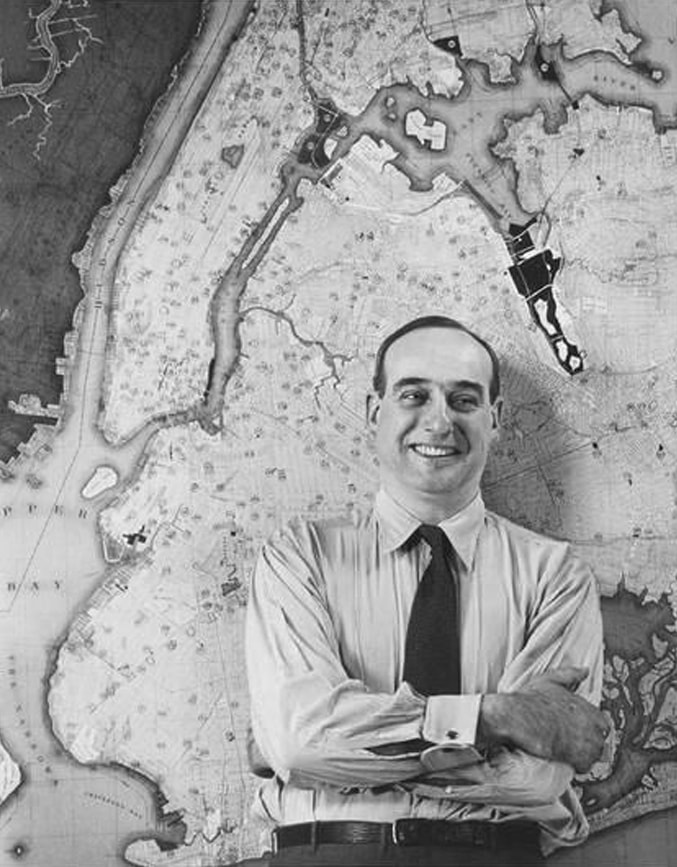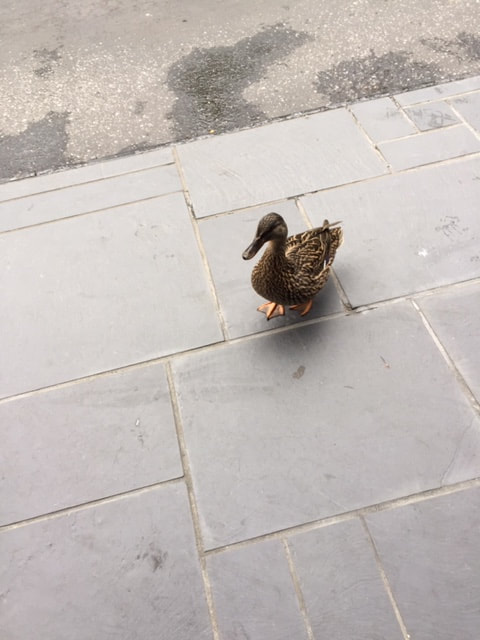|
By Deborah Harley Robert Moses, who was responsible for building the extensive system of parks and roads in New York City in the middle of the 20th century, was a man with big dreams. One early and enduring dream was to build a great highway alongside a great park that would run up the west side of Manhattan. To realize this dream, Moses needed money, and in 1934 this dream was going to cost him $109 million. Robert Moses, 1938 New York had been planning a road to the northern tip of Manhattan and beyond since the mid-19th century. The initial portion of the road was completed around 1900 and ended just north of Grant’s Tomb. Progress on the remainder of the project had been slowed by the perennial lack of funds, tax protests, and design disagreements. Moses, however, would not be so easily deterred. As detailed by Robert Caro in his book The Power Broker, Moses set about financing his dream by piecing together an array of unlikely state and federal funds. In one case, he exploited state funds intended to aid railroads. He remembered and used an obscure federal statute meant to promote art on public works. He found financing for an almost bankrupt railroad that allowed it to refinance its debt, save on interest payments, and pay back $8.2 million owed to the city for long-planned West Side improvements. Perhaps the cleverest bit of cunning occurred when Moses played two agencies off each other, telling each that the other one would contribute a certain amount towards the project if it would also help out. It worked; he got the funds. New York City had held high hopes for a West Side road and park ever since Frederick Law Olmsted submitted a plan to the city in 1875. Newspaper accounts about the proposed road spoke rapturously of the picturesque views that both motorists and pedestrians would enjoy as they journeyed along the majestic cliffs of the Hudson. For example, a 1904 article asserted that “to find its equal one will be obliged to combine all the attractions of the Rhine Valley and the garden country of England.” The New York Times proclaimed in 1906 that the road would give New York “a riverside promenade as no other city in the world.” Aesthetic expectations were so high that in 1907 the Arts Commission of New York City rejected the second design for the proposed Henry Hudson Bridge, which crosses the Harlem River at the northern tip of Manhattan, by calling it “not magnificent and not monumental” enough. A third design fared better, with a writer commenting in Scientific American that “New York City will possess a monument which will be as enduring as the pyramids themselves.” That bridge was never built. Moses’s final challenge was the financing and building of the Henry Hudson Bridge. He chose the same route that had been proposed 30 years earlier, on a high bluff in Inwood Hill across the river from Spuyten Duyvil. Moses’s bridge, however, would be a toll bridge, and bonds could be sold to finance its construction. But it was the Depression, and bankers were skeptical of the bridge’s profit potential. Why, they wondered, would anyone pay to cross a bridge when a free one was nearby? Moses nevertheless prevailed, and he got the last bit of funding needed to secure his dream. But times had changed. Preservationists raised objections after they realized that the proposed route would go straight through the center of the last remaining primordial forest in Manhattan. Although preservationists proposed a couple of alternative routes, each threatened portions of Moses’s carefully cobbled together funding. When the preservationists demanded that Moses hold a public hearing about his plan, he agreed and scheduled it for two weeks later. Then he promptly started cutting down hundreds of trees in Inwood Hill Park for the right-of-way. It would not be the last time he would pull a stunt like that. Moses had won the battle and the war. The Henry Hudson Parkway was completed in 1937, just three years after construction began. Hudson Rising The New-York Historical Society has a new exhibition exploring the majestic Hudson River. It’s called Hudson Rising. The exhibition covers the history of the Hudson, as well as its impact on art and environmental awareness. Discover why the Hudson River has been an inspiration to so many for over 200 years. The exhibition is on display until August 4, 2019. For more information, go to https://www.nyhistory.org/exhibitions/hudson-rising. June Tours Most Take a Walk New York tours cover 1 to 2 miles, last 2 to 2½ hours, and cost $25 per person. Advance registration is required. To register and to learn the meeting place, email the guide ([email protected] or [email protected]). Please arrive a little before the start time. Tours are cancelled if nobody has registered or if the weather is extreme; if in doubt, call or text Laurie (917-306-2868) or Alan (917-363-4292). Greenwich Village: In the Footsteps of Writers Many writers and other creative people have called Greenwich Village home. On this tour, you’ll meander through charming Village streets and peek into hidden cul-de-sacs as you learn where some famous writers—including Edna St. Vincent Millay, e.e. cummings, and Edward Albee—lived and hung out with their friends. Take advantage of the long summer evenings by joining Laurie on Thursday, June 6, at 6 PM. To reserve a place and to learn the meeting location, email her at [email protected]. Central Park: Highlights of the Southern Half In the popular southern half of Central Park, you’ll recognize some of the most filmed and photographed sights in New York, including Strawberry Fields, the Sheep Meadow, and Bethesda Terrace. Enjoy watching boaters on the Lake and wandering through the wooded Ramble. Take a walk with Laurie through the southern half of Central Park on Friday, June 14, at 1:30 PM. Please email the guide ([email protected]) to register and to learn the meeting location. Central Park: Marvels of the Northern Half The northern end of Central Park features some of the city’s most surprising landscapes. Take a hike in the woods, and you’ll feel as though you’ve left the city. Discover New York’s own Secret Garden. If history rather than nature is your thing, fear not. You’ll learn about the role this area played in early American wars. Join Alan on Saturday, June 15, at 11 AM to explore the northern part of Central Park. To reserve a spot and to learn where to meet, email him at [email protected]. 400 Years of History in Less Than a Mile Lower Broadway is like an illustrated history textbook, with the pages out of order. This stretch of Manhattan reflects American history from colonial times to the present. Take a walk in the footsteps of George Washington and Alexander Hamilton. Hear stories about heroes like them as well as rogues like William “Boss” Tweed. Look at beautiful buildings, including the first department store. Alan offers this tour on Sunday, June 23, at 10 AM. To make a reservation and to learn the meeting location, please email him at [email protected].
June Tours
|
Archives
April 2024
|



